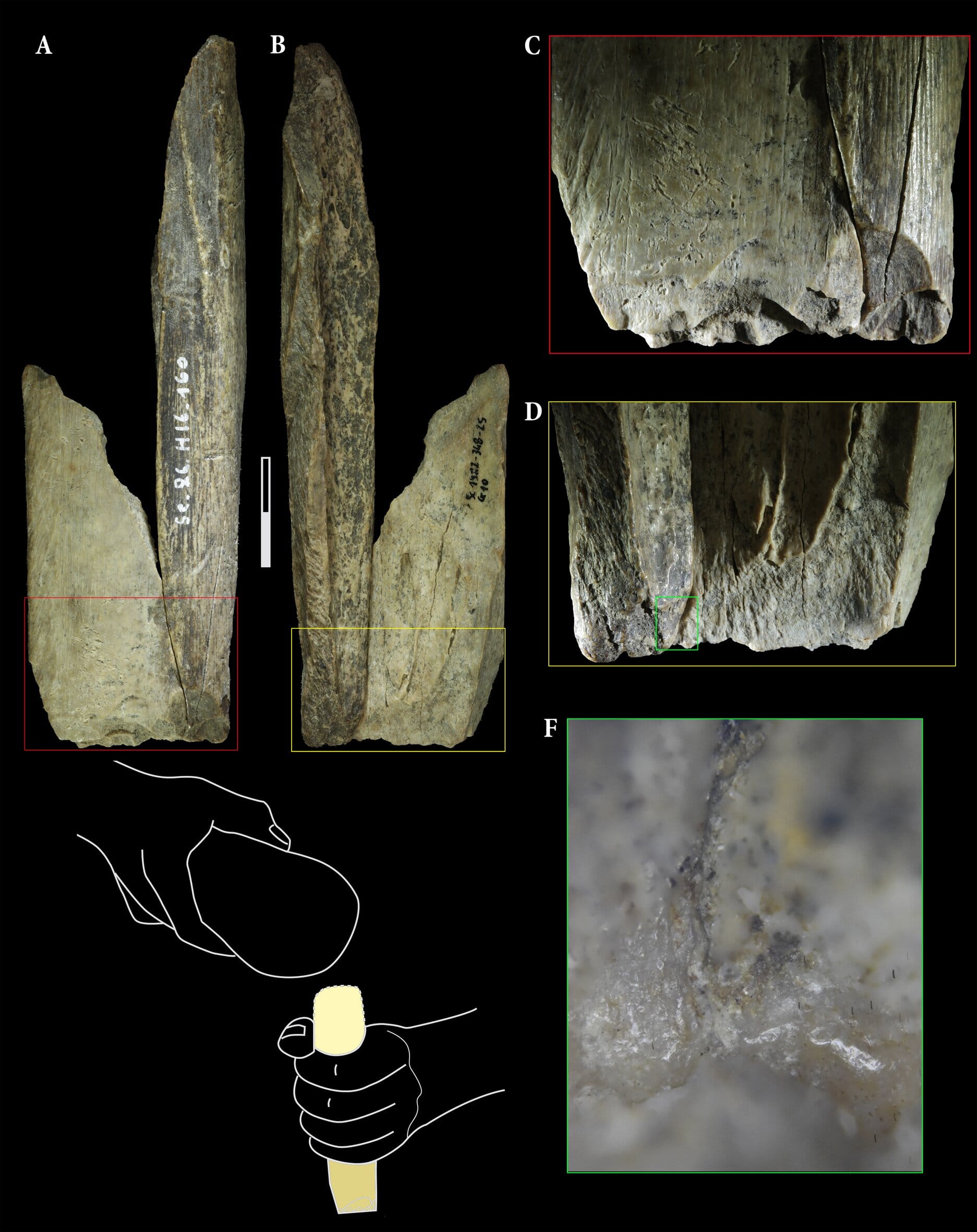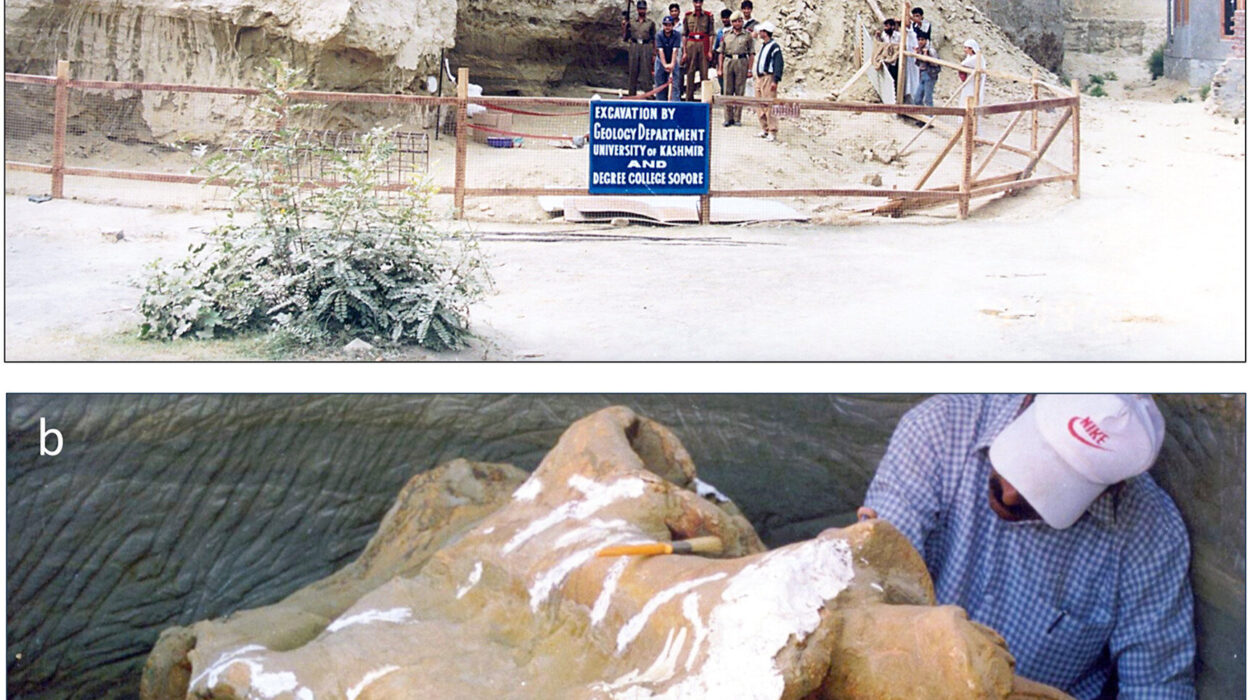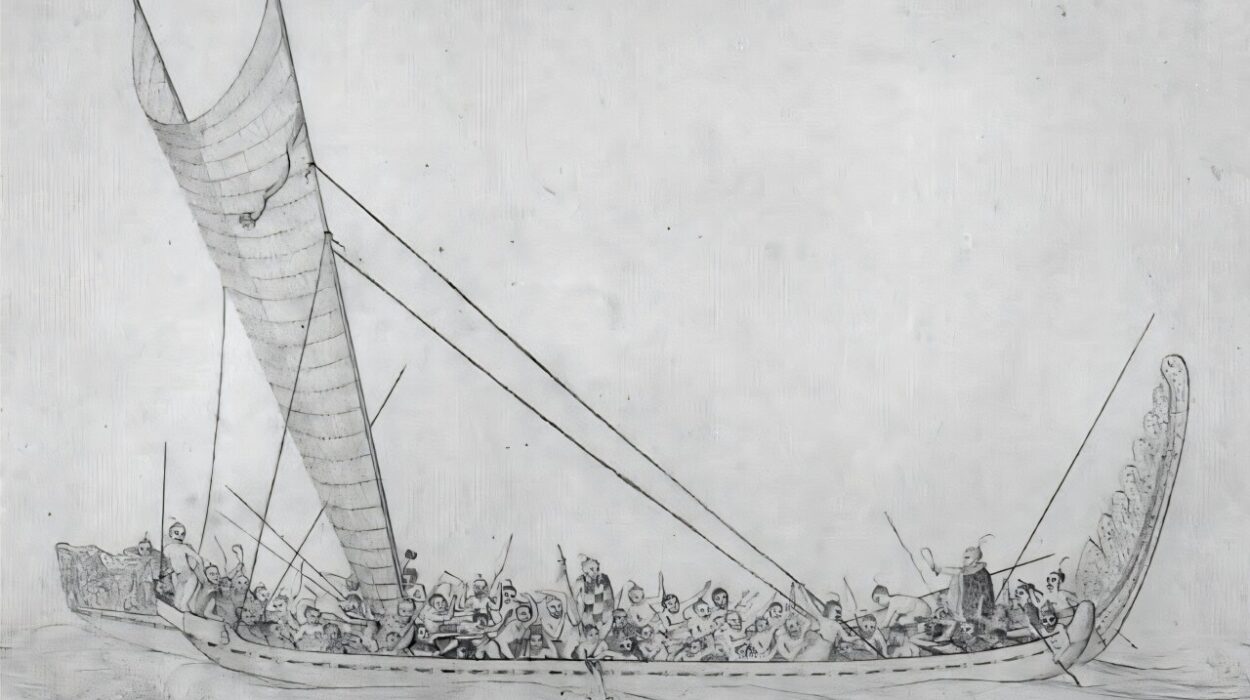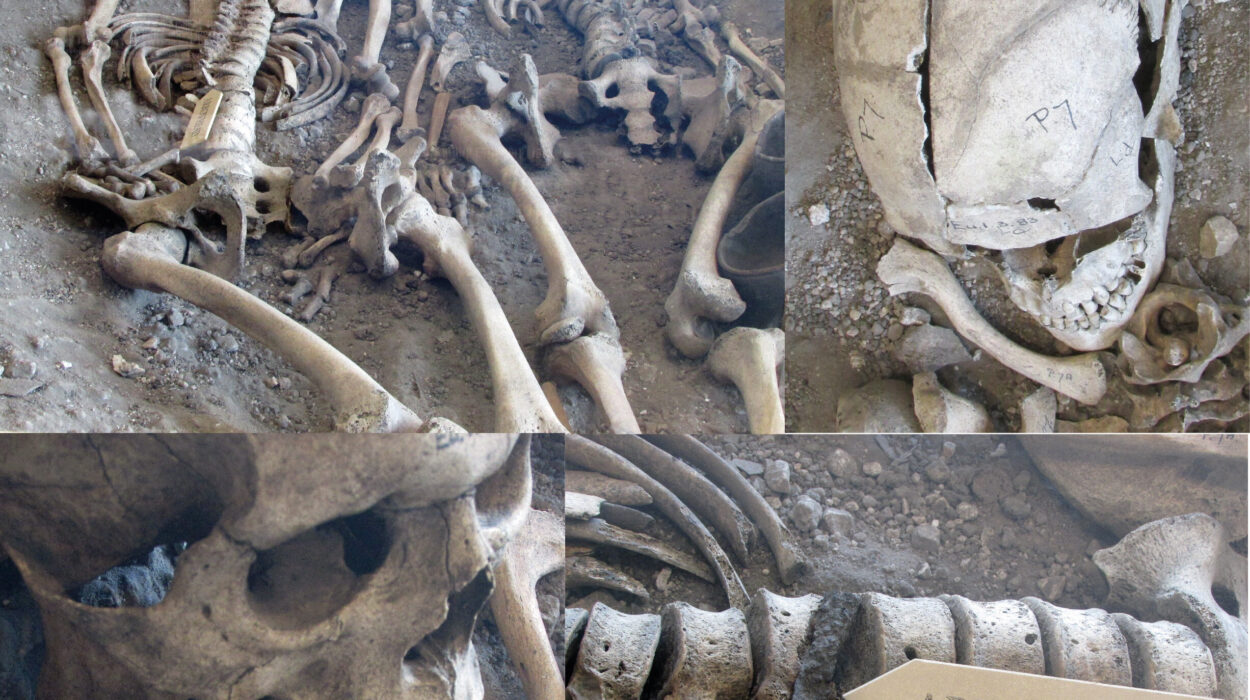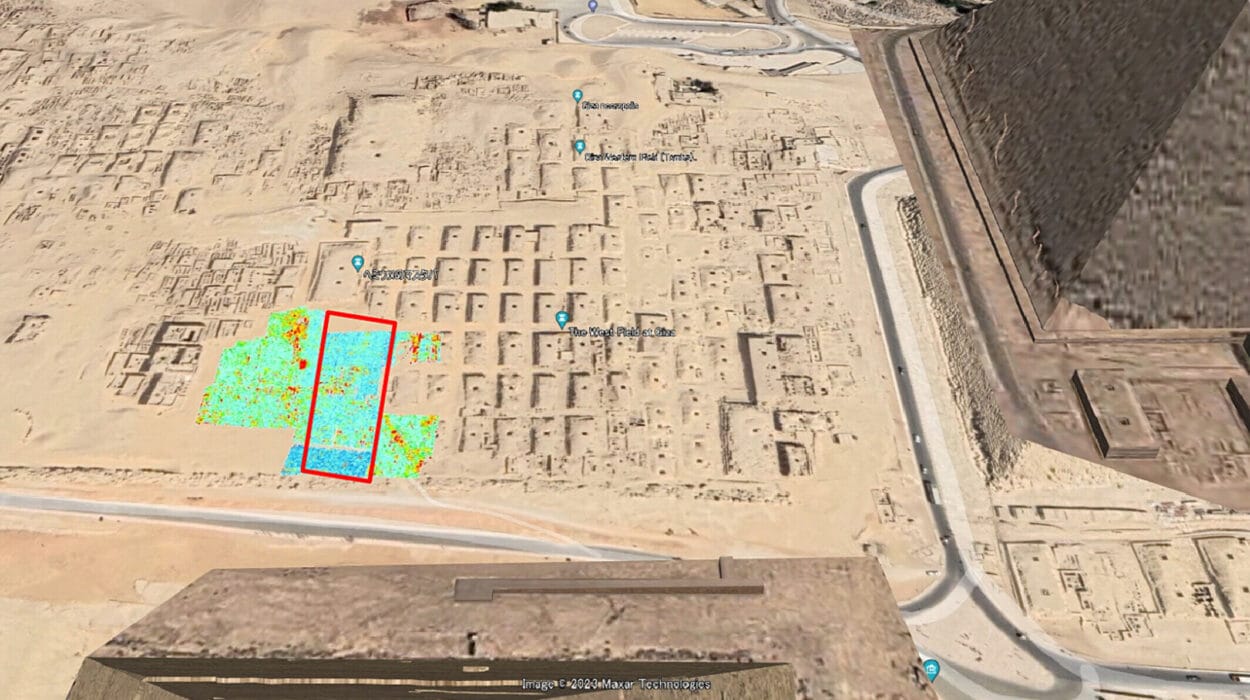In the dim, chilly depths of a Belgian cave, where the flickering light of fire would have barely penetrated the darkness, Neanderthals were busy crafting tools that would change the way we understand their intelligence. A remarkable new discovery has uncovered the earliest known multifunctional tool made from cave lion bone—an innovation that reveals much more than the sheer survival instincts of our ancient cousins.
Dating back around 130,000 years, to the waning days of the Saalian glaciation, this bone tool—carved from a cave lion tibia—offers a stunning glimpse into the resourcefulness and ingenuity of Neanderthals. The tool, much like a prehistoric Swiss Army knife, is composed of four distinct implements, each one shaped with precision, indicating that Neanderthals were far more than simple, unskilled survivors.
This discovery, published in the journal Scientific Reports, challenges outdated perceptions of Neanderthals and offers fresh insights into their cognitive abilities, their adaptability, and their complex relationship with the animals they shared their world with—specifically, the now-extinct cave lions.
A Glimpse Into Prehistoric Craftsmanship
The site of the Scladina Cave, a trove of archaeological wonders in Belgium, has once again proven its worth. Known for its rich collection of Neanderthal artifacts, the cave has revealed not only the remains of an eight-year-old Neanderthal girl, dubbed the Scladina child, but also thousands of flint tool fragments and animal bones, all dating back to a time when the planet was in the grips of an Ice Age.
Among these remarkable finds are the bone tools, which, after meticulous analysis, revealed evidence of intentional shaping, use, and repurposing. The four tools carved from the cave lion tibia were initially crafted for tasks such as chiseling, but as time wore on and their edges dulled, the tools were broken and reworked to sharpen flint—a process known as retouching.
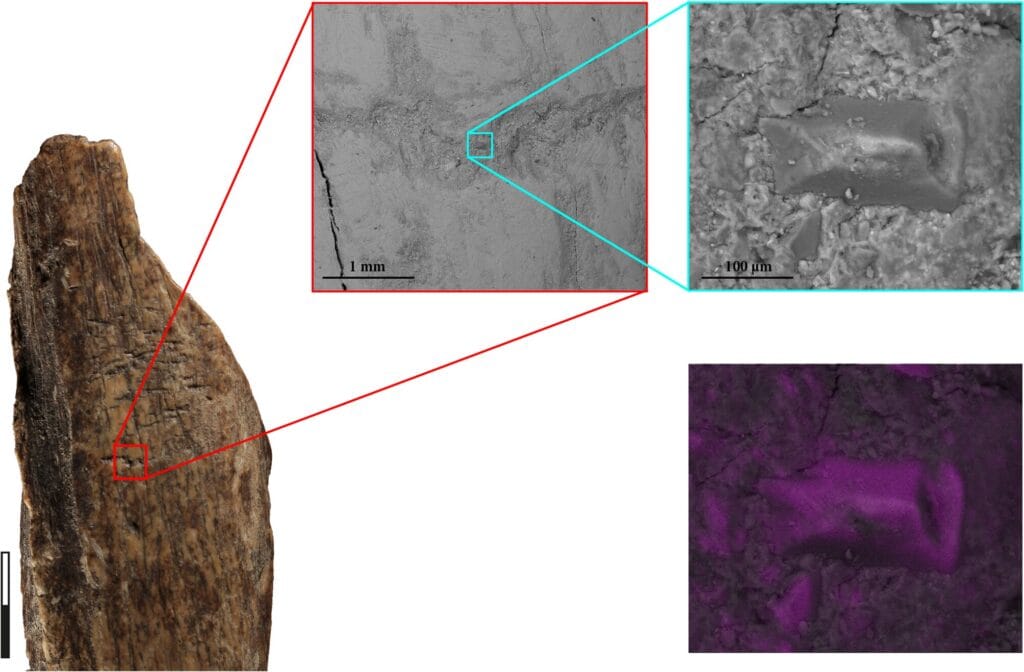
To imagine these tools in use is to see Neanderthals as something more than the brutish, cave-dwelling figures that popular media often portrays. These were skilled individuals, capable of adapting their environment and resources in ways that required careful thought, planning, and dexterity.
A Shift in Our View of Neanderthal Intelligence
For centuries, Neanderthals have been cast in the shadow of their more sophisticated cousins, modern Homo sapiens. Often depicted as clumsy, unintelligent beings, it was easy for early anthropologists to assume that Neanderthals were little more than brute strength wrapped in thick skin.
However, discoveries like the one at Scladina Cave are rewriting that narrative. The bone tools, crafted from the tibia of the cave lion, show a level of cognitive skill that was previously underestimated. These tools weren’t just survival implements—they were versatile and purposefully crafted, revealing that Neanderthals possessed a complex understanding of their environment.
“The intentional transformation of lion bones into functional tools highlights Neanderthals’ cognitive skills, adaptability, and capacity for resource utilization beyond their immediate survival needs,” said the authors of the study. The fact that Neanderthals chose such an unusual material—the bones of a powerful predator—further suggests a sophisticated understanding of how to repurpose materials to meet a variety of needs, from tool-making to possibly even protection.
A Complex Relationship with Cave Lions
While the relationship between Neanderthals and cave lions has long been speculative, this latest discovery provides fascinating evidence of coexistence. The fact that Neanderthals not only hunted these magnificent creatures but also used their bones to craft tools is a clue to the complex dynamic between them.
Though previous findings had suggested that Neanderthals butchered cave lions for their meat and fur, this is the first evidence that they also made tools from the bones of these animals. This suggests that the cave lions were not merely prey but were deeply integrated into the Neanderthal way of life, contributing to both their material culture and their survival strategies.
Interestingly, the study authors note that the crafting of tools from these bones follows a pattern seen in tools made from other animals, such as bears. This implies that Neanderthals weren’t particularly sentimental or symbolic about their prey. Instead, they likely saw cave lions and other animals simply as resources, tools to be used for their practical value, whether it was for food, shelter, or crafting implements.
The Multipurpose Tool: Innovation and Efficiency
The cave lion tibia itself, a massive and robust bone, was ideally suited to the task. Its size, shape, and structural integrity made it the perfect material for carving tools that could perform multiple functions. These tools, the equivalent of a prehistoric Swiss Army knife, showcase not just skill but efficiency—a trait often associated with the development of advanced cultures.
The fact that Neanderthals didn’t discard these tools when they became worn but instead repurposed them, reworking the bones to sharpen flint tools, shows a high level of resourcefulness and practical ingenuity. This level of recycling—taking what was once useful and turning it into something new—speaks to a deep understanding of sustainability that resonates even today.
What Does This Mean for Neanderthal Society?
The broader implications of these findings are profound. By showing that Neanderthals were actively involved in making tools from carnivore bones, this study offers a deeper look into their social dynamics. The ability to craft and use such tools suggests that Neanderthals were capable of complex behaviors, possibly including communication and the passing down of knowledge across generations.
But it also calls attention to the practicality of their lives. Neanderthals may not have had the symbolic rituals that some other hominins, like Homo sapiens, are known for, but they certainly had the intelligence to adapt their environment for their needs. Whether for hunting, tool-making, or even creating weapons for protection, Neanderthals were masterful at making the most of their resources.
A New Chapter in Neanderthal Research
As researchers continue to study these bone tools, new questions are likely to emerge about the ways Neanderthals interacted with their world and each other. The presence of cave lion bones among Neanderthal tools hints at a culture that was as much about innovation and adaptation as it was about brute survival.
Further research could help us better understand how widespread the use of carnivore bones was across other Neanderthal sites. Was this a localized practice, or did it have broader implications for the way Neanderthals viewed and used their environment?
In any case, the findings at Scladina Cave help to bridge the gap between us and our ancient relatives, offering a fresh perspective on the Neanderthal legacy. They were not simply survivors in the harshest of environments; they were innovators, shaping tools and strategies that would have allowed them to thrive for hundreds of thousands of years.
As we gaze back into the shadowy caves where these ancient people once lived, one thing is clear: Neanderthals were far from the brutish, dim-witted creatures once depicted in popular media. They were resourceful, intelligent, and remarkably capable—perhaps not so different from ourselves after all.
Reference: Grégory Abrams et al, Earliest evidence of Neanderthal multifunctional bone tool production from cave lion (Panthera spelaea) remains, Scientific Reports (2025). DOI: 10.1038/s41598-025-08588-w
